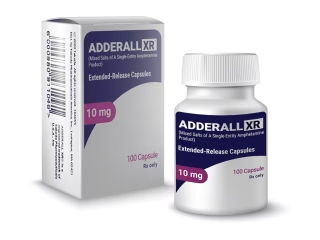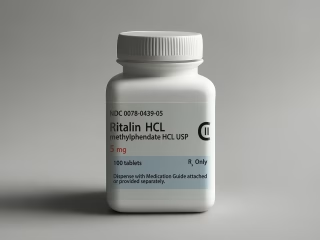Anxiety Unveiled: Demystifying the Mental Tug-of-War

Anxiety Unveiled: Demystifying the Mental Tug-of-War
Given that anxiety is a widespread occurrence, it is nevertheless one of the most poorly understood mental health conditions. Because it’s frequently viewed through a prism of stigma, misunderstanding, or even contempt, many people struggle in quiet. Investigating what anxiety is, how it appears, and practical management strategies is crucial to gaining a complete understanding of the condition. Through an examination of the underlying causes, typical symptoms, and useful coping and therapeutic techniques, this site seeks to demystify anxiety.
What Is Anxiety?
Simply put, anxiety is a normal reaction to stress or imagined dangers. It is the body’s method of getting ready for an emergency; it is also known as the “fight or flight” reaction. Humans need this reaction to survive because it allows them to react swiftly to danger. But in the contemporary environment, this antiquated defense mechanism may become troublesome if it becomes overly strong or out of proportion to the real threat.
The hallmark of anxiety disorders is excessive, ongoing concern or fear that gets in the way of day-to-day activities. Anxiety disorders are marked by greater intensity, extended symptoms, and a tendency to be disproportionate to the real circumstances, in contrast to the occasional anxiety that everyone encounters.
The Science Behind Anxiety
Knowing the physiological and psychological causes of anxiety might help explain why it affects so many individuals and why managing it can be so difficult.
The Brain’s Role
The brain is a major contributor to anxiety. In the temporal lobe, the amygdala is a little almond-shaped cluster of nuclei that plays a key role in processing emotions, particularly fear. The hypothalamus receives signals from the amygdala when it senses a threat, and the hypothalamus subsequently triggers the body’s stress response mechanisms.
Hormones, including cortisol and adrenaline, are released during this reaction, preparing the body to respond to the perceived threat. However, this system can become overactive in people who suffer from anxiety problems.
Even in the absence of actual danger, the amygdala may become hypersensitive and cause an excessive stress response. Chronic anxiety can result from the brain’s overestimation of risks and underestimation of an individual’s capacity for coping due to this elevated state of alertness.
Genetics and Environment
Anxiety is also influenced by genetics. Studies reveal that anxiety problems may have a genetic component and can run in families. However, a person’s propensity to develop anxiety disorders is not only determined by heredity.
Life events, stress, and trauma are examples of environmental factors that have a big impact on how likely someone is to acquire anxiety. For example, because of the brain’s heightened stress reaction, those who undergo catastrophic experiences or prolonged stress may develop an anxiety condition. In a similar vein, those who are raised in anxious circumstances may be more prone to adopting similar thoughts and behavior patterns.
Common Symptoms of Anxiety
Anxiety can take many different forms and have an impact on the body and psyche. Typical signs and symptoms include:
Psychological Symptoms
Excessive Worry: Uncontrollable, ongoing worry about a variety of life issues that is frequently accompanied by a sense of approaching doom.
An inability to settle down or remain motionless is characterized by an agitated feeling
Challenges Focusing: Having difficulty concentrating on work or being quickly sidetracked by worrisome thoughts.
Physical Symptoms
- Rapid Heartbeat: A feeling of palpitations or an unusually fast heartbeat.
- Muscle Tension: Persistent tightness or discomfort in muscles, particularly in the neck, shoulders, and jaw.
- Sweating and Trembling: Excessive sweating or shaking, often in stressful situations.
- Fatigue: Feeling exhausted despite adequate rest, often due to the constant state of alertness.
Behavioral Symptoms
- Avoidance: Steering clear of situations or places that trigger anxiety, which can limit personal and professional activities.
- Compulsive Behavior: Engaging in repetitive actions or rituals to reduce anxiety, such as excessive checking or handwashing.
Types of Anxiety Disorders
Anxiety disorders encompass a range of conditions, each with its own specific characteristics:
Anxiety Disorder in General (GAD)
The hallmark of GAD is excessive and ongoing concern about a variety of life issues, including job, health, and social interactions. GAD sufferers frequently struggle to regulate their anxiety, which causes severe distress and impairs their ability to go about their everyday lives
Panic Disorder
Panic disorder is typified by sudden, severe fear or discomfort that comes on suddenly and is repeated. Chest pain, breathlessness, and lightheadedness are some of the symptoms that these attacks may cause. Avoiding particular situations or places can be a result of fearing more panic episodes.
Disorders of Social Anxiety
An acute dread of being observed or judged by others in social circumstances is the hallmark of social anxiety disorder. Avoiding social situations due to this phobia can have a negative influence on relationships, both personally and professionally.
Specific Phobias
An unreasonable and severe dread of a specific thing or circumstance, such as spiders, heights, or flying, is known as a specific phobia. People who experience this dread may go to considerable lengths to avoid the thing or circumstance they are afraid of.
Obsessive-Compulsive Disorder (OCD)
Obsessive, intrusive thoughts and compulsive actions taken to reduce the anxiety these ideas create are characteristics of OCD. For instance, someone may wash their hands excessively out of compulsion due to obsessive thoughts about contamination.
Post-Traumatic Stress Disorder (PTSD)
Experiencing or witnessing a distressing event might result in the development of PTSD. Flashbacks, nightmares, and excruciating anxiety associated with the trauma are among the symptoms. PTSD sufferers may also have trouble sleeping and feel emotionally numb.
Strategies for Managing Anxiety
A mix of dietary adjustments, therapeutic interventions, and, occasionally, medication is used to manage anxiety. These are a few successful tactics.
Cognitive-behavioral therapy (CBT)
CBT is a well-known therapy strategy for treating anxiety problems. It focuses on recognizing and combating unfavorable thought patterns and actions that fuel anxiety. People can improve their coping skills and lessen their anxiety by altering certain mental habits.
Medication
To treat anxiety symptoms, doctors may prescribe drugs like benzodiazepines and selective serotonin reuptake inhibitors (SSRIs). Acute anxiety can be temporarily relieved by benzodiazepines, while SSRIs aid in the balance of neurotransmitters in the brain. Working with a healthcare professional is crucial to choosing the right drug and dosage.
Mindfulness and Relaxation Techniques
By encouraging relaxation and lowering stress, mindfulness techniques like meditation and deep breathing exercises can aid in the management of anxiety. These methods can lessen the symptoms of worry and keep people rooted in the here and now.
Regular Exercise
Regular physical activity can significantly reduce anxiety. Exercise can improve tension and stress by promoting the production of endorphins, which are naturally occurring mood boosters.
Healthy Lifestyle Choices
Reducing alcohol and caffeine use, eating a balanced diet, and getting enough sleep can all improve general mental health and lessen the symptoms of anxiety. Making healthy lifestyle choices helps one’s mental stability and coping skills.
Building a Support System
Making connections with understanding and consoling family members, friends, or support groups can be beneficial. Talking to people who have gone through comparable struggles with you might help you feel less alone and provide helpful tips for handling anxiety.
Setting Realistic Goals
Reducing feelings of overload can be achieved by establishing realistic goals and segmenting work into manageable portions. People who concentrate on one activity at a time might boost their confidence and lessen the worry that comes with handling big or difficult activities.
In summary
Anxiety is a widespread and intricate disorder that impacts millions of individuals globally. Through comprehension of the fundamental mechanisms, indications, and accessible interventions, people can more adeptly steer their path toward anxiety management.
It is possible to lessen the negative effects of anxiety on day-to-day activities and attain a higher level of well-being with the appropriate techniques and assistance. Recall that making proactive decisions and asking for assistance can result in significant advancements and a more contented, balanced life.

















































Leave a Reply